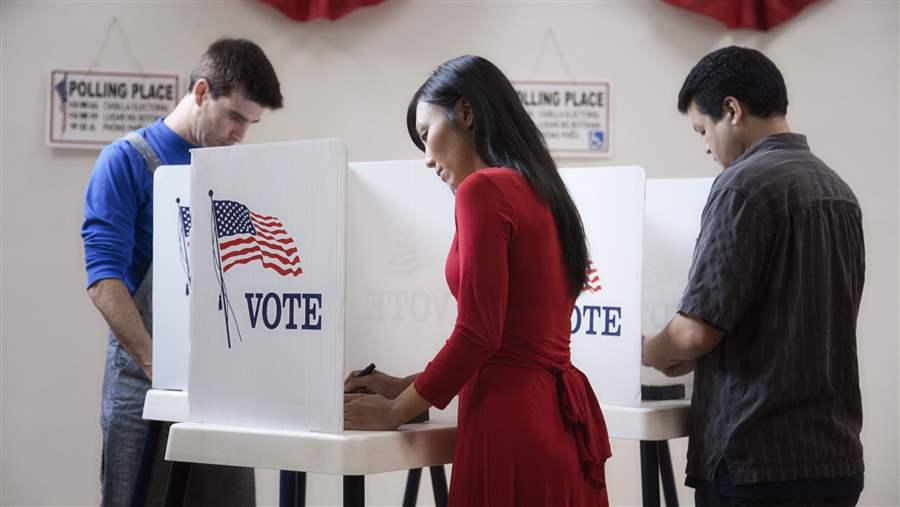Examining the Election Process

Election officials from both parties from across the country have been working to upgrade their state voter registration systems.
© Getty Images
Voting is the bedrock of our democracy. That’s why for 10 years The Pew Charitable Trusts has worked directly with election officials and private sector partners to create tools that make voting easier, more efficient, and less costly.
Because each state oversees its own election process, we’ve worked with experts and election officials of both parties to examine pressing election problems, share successful practices, and help states implement efficient and cost-effective policies and procedures.
Five years ago, we issued a report examining the accuracy of our nation’s voter rolls. The study, “Inaccurate, Costly, and Inefficient: Evidence That America’s Voter Registration System Needs an Upgrade,” focused on inefficient and inaccurate voter registration processes—which are not evidence of fraud at polling places. The analysis presented national-level estimates on the number of voter registration records that were inaccurate or no longer valid, including the number of voters registered in more than one state and the number of deceased individuals on the rolls. It provided states with new data and encouraged election officials to connect with each other.
Since the study was released in 2012, great strides have been made. Election officials from both parties from across the country have been working to upgrade their state voter registration systems, using advanced technology to achieve greater accuracy, increase savings, and improve processes. That work is making a difference. Not only are states sharing voter registration data, which helps them improve the accuracy of their lists, they have also made significant progress in improving and upgrading the voting experience. New tools and technology make it easier for voters to register—and find their polling place.
“With the 2016 elections over, Republican and Democratic officials nationwide are working to prepare for elections in 2017 and beyond,” notes Doug Chapin, director of the Program for Excellence in Election Administration at the University of Minnesota and an adviser to Pew. “Voting-technology upgrades are likely on the agenda for most of these officials.”
In 2008, only two states offered online voter registration, but by last year eligible citizens in 32 states and the District of Columbia could go online to securely and accurately register to vote or update their existing records. Pew’s research found that registration applications received electronically tend to be more accurate and cost less to process.
More states are also joining the Electronic Registration Information Center (ERIC), begun with assistance from Pew and now governed and funded by its member states. ERIC allows states to look for voter records that may be out of date by cross-referencing state voter rolls with other official government data sources, such as motor vehicle records. By doing so, ERIC members have identified over 25 million eligible individuals who have proved their identity but haven’t registered to vote. Through ERIC, states are able to contact these eligible citizens and educate them on the most efficient and secure methods to register. And now that some of the most populous states, such as Illinois, Pennsylvania, and Ohio, have joined ERIC, more than 13 million eligible citizens received registration instructions in 2016.
“Before ERIC was formed, elections officials had limited means to identify voters who have moved or passed away,” says John Lindback, executive director of ERIC. “Being registered in two states is not a sign of fraud, but rather a sign that states need to do more work to keep their voter registration rolls up to date. That is what ERIC does.”
Independent researchers found that ERIC states outperformed nonmember on several key metrics of election administration, including voter registration and turnout rates, and the number of provisional ballots issued and rejected.
Before ERIC, election officials were largely limited to reacting to registration activity driven by campaigns and advocacy groups. Now, with more data and the tools to detect and contact new voters and those whose records may be outdated, election officials in ERIC states can be proactive in their approach to voter roll maintenance.
Room for improvement remains, of course. Fact-based research and analysis, input from respected experts, and bipartisan discussions among state and federal officials can help make our election systems even more secure and more efficient—as well as easier for our citizens to navigate.
Michael Caudell-Feagan is a vice president at Pew.









